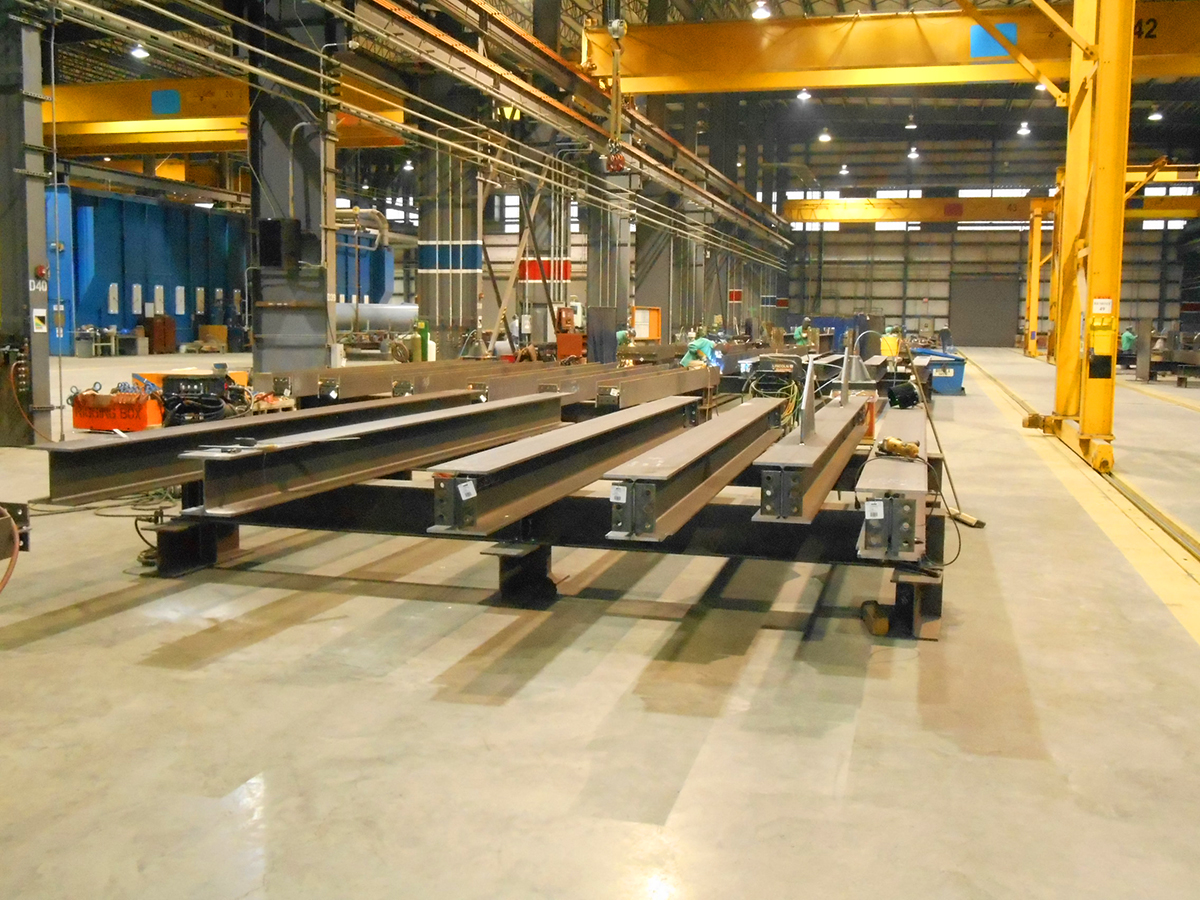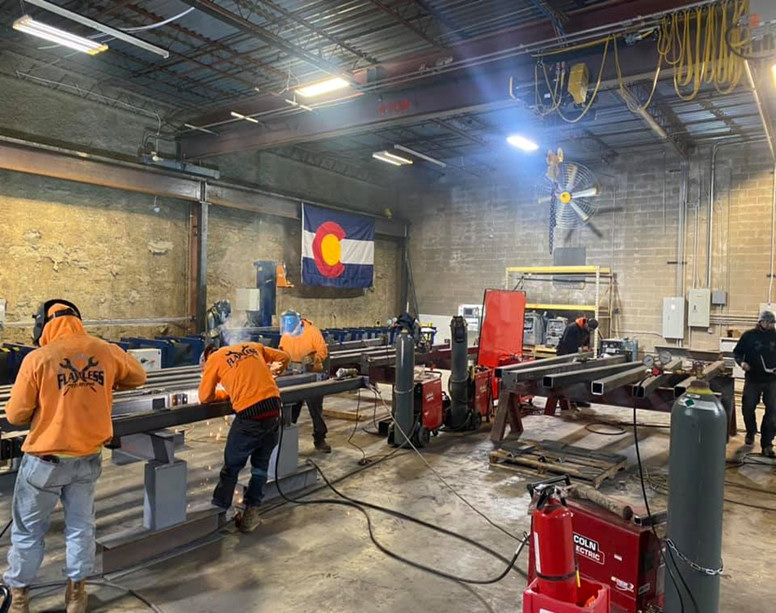Trusted Steel Fixing Solutions: Ensuring Structural Honesty
Trusted Steel Fixing Solutions: Ensuring Structural Honesty
Blog Article
The Ultimate Manual on Custom Steel Construction Solutions for Structural Projects
In the world of architectural projects, the relevance of personalized steel manufacture remedies can not be overemphasized. From the foundational understanding of steel construction fundamentals to the complex process of choosing the most appropriate materials, every step in this journey plays a critical duty in the utmost success of a project. As we navigate through the complexities of style factors to consider, fabrication processes, and high quality control measures, an extensive handbook serves as a guiding light for experts looking for excellence in steel fabrication solutions. Remain tuned to uncover the insights that can revolutionize the means structural tasks are approached and implemented.
Recognizing Personalized Steel Manufacture Basics
Diving right into the fundamentals of custom-made steel construction supplies insight right into the elaborate procedure of changing raw steel into customized structural elements. Personalized steel fabrication is a specific production strategy that involves cutting, shaping, and setting up steel materials to create special structures according to details task requirements. Recognizing the basics of custom steel manufacture is vital for ensuring the effective implementation of architectural tasks.
The process usually starts with the evaluation of task specs and design needs. This initial stage involves thorough preparation and cooperation in between designers, engineers, and makers to identify the most ideal technique for fabricating the steel elements. Accuracy is crucial throughout the manufacture process, as even minor variances can affect the architectural integrity of the last product.
Various strategies, such as reducing, welding, and shaping, are employed to transform raw steel right into the preferred architectural elements. Proficient makers use sophisticated equipment and tools to make sure precision and uniformity throughout the construction process. Quality control actions are applied to confirm the honesty of the produced components prior to they are assembled on-site, ensuring compliance with market requirements and job specifications.
Selecting the Right Steel Products

Firstly, the kind of architectural project and its specific requirements play an important role in determining one of the most suitable steel materials. Aspects such as the load-bearing capability, ecological problems, and wanted life expectancy of the structure will dictate the quality and kind of steel that need to be utilized.
Furthermore, the physical properties of the steel, including weldability, toughness, and ductility, have to align with the job's demands to ensure optimal performance and sturdiness (steel fixing). In addition, considerations such as corrosion resistance, cost-effectiveness, and accessibility of the steel materials should likewise be taken right into account throughout the selection process
Design Considerations for Structural Jobs
Architectural projects demand precise attention to make considerations to make certain both capability and security are focused on throughout the building procedure. When it concerns making structural tasks, numerous essential elements must be thought about to guarantee the success of the undertaking. The structural integrity of the building need to be a top priority. This involves assessing lots, anxieties, and ecological factors to identify one of the most suitable style that can hold up against different problems with time. Furthermore, considerations for the functionality of the structure play an essential function in the layout procedure. Understanding the objective of the structure and how it will certainly be made use of assists in developing a style that makes best use of effectiveness and use. Including elements that enhance the aesthetics of the framework can even more boost the overall design. Stabilizing aesthetics, performance, and security is important in developing effective architectural jobs that fulfill both sensible and visual demands. By very carefully considering these facets during the style phase, engineers and architects can make sure the structural task's success from conception to completion.
Streamlining Construction Procedures for Efficiency

Furthermore, implementing lean production concepts can considerably enhance effectiveness in steel fabrication. By decreasing waste, optimizing operations, and improving interaction in between different groups included in the fabrication procedure, jobs can be completed much more promptly and with better criteria.
Furthermore, establishing a well-organized manufacturing timetable and workflow can aid in focusing on tasks, designating resources successfully, and conference job deadlines without delay. By having a clear plan in area and frequently monitoring development, any kind of potential bottlenecks or delays can be determined and attended to immediately, making sure reliable and smooth fabrication procedures for structural projects.
Quality Control and Job Monitoring in Steel Construction
To guarantee the successful implementation of steel construction projects, precise top quality control procedures and effective job monitoring methods are crucial parts in maintaining precision and meeting client assumptions. Quality assurance in steel construction entails extensive assessments at various stages of the fabrication process to confirm compliance with task requirements and market standards. This consists of material screening, dimensional checks, and weld examinations to guarantee architectural honesty and security.
Project administration plays a crucial role in collaborating the different elements of steel manufacture jobs, such as scheduling, resource allowance, and communication among employee. A distinct project plan with clear purposes, turning points, and timelines aids to monitor progression and deal with any kind of possible concerns proactively. Effective communication in between all stakeholders, consisting of clients, service providers, producers, and engineers, is important for guaranteeing that the task advances efficiently and satisfies the desired high quality criteria.
Conclusion
In verdict, customized steel fabrication plays a crucial role in architectural tasks by supplying customized options utilizing the ideal materials and design factors to consider. wikipedia reference Efficiency in fabrication procedures, top quality control, and reliable task management are crucial for effective end results. By understanding the fundamentals of custom steel fabrication and implementing structured procedures, project teams can supply long lasting and top notch frameworks that meet the particular requirements of their clients.
Personalized steel fabrication is a customized manufacturing strategy that involves cutting, shaping, and constructing steel materials to develop distinct frameworks according to details job needs.To make sure the effective implementation of steel fabrication tasks, meticulous high quality control procedures and efficient task Get More Info management practices are important components in preserving precision and meeting customer assumptions. Quality control in steel manufacture involves extensive examinations at different phases of the fabrication process to verify conformity with job specs and industry criteria (steel fabricators melbourne).Project monitoring plays an essential function in working with the different aspects of steel construction jobs, such as scheduling, resource appropriation, and communication amongst team members.In verdict, custom-made steel manufacture plays a crucial role in structural jobs by offering tailored solutions utilizing the right materials and layout considerations
Report this page